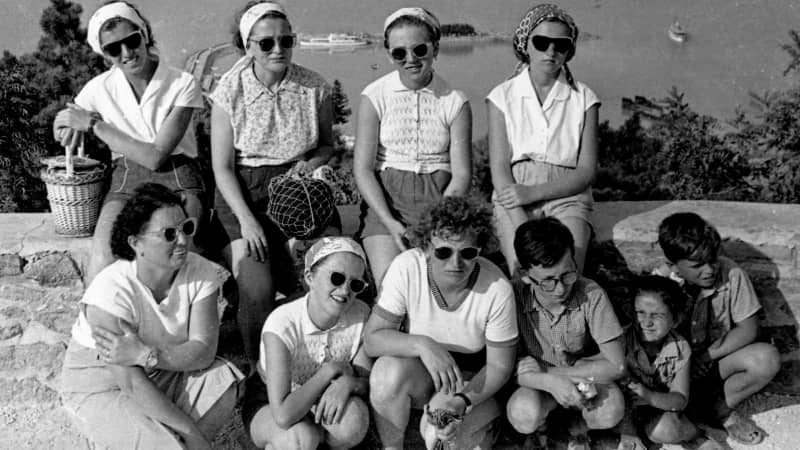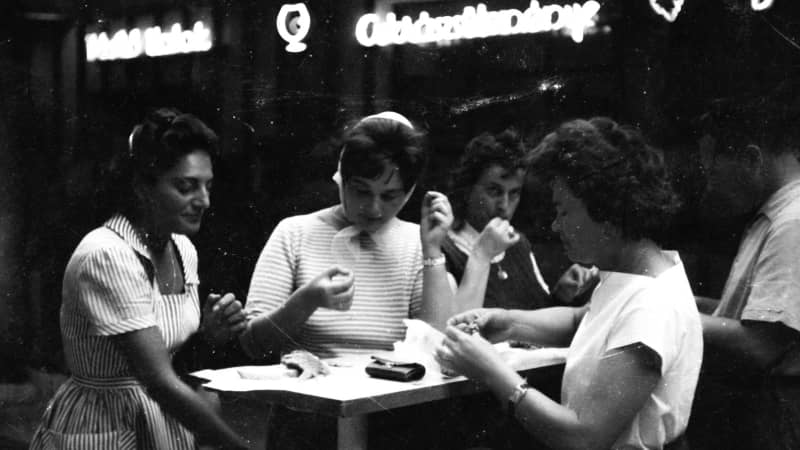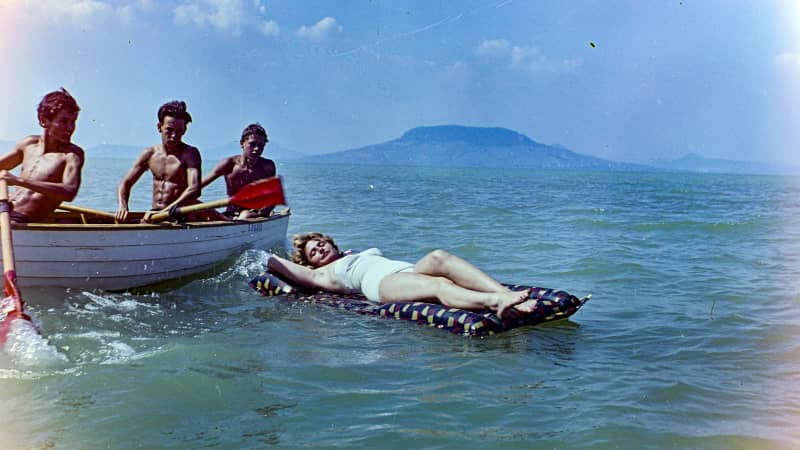(CNN) — During the communist era, travel options were limited in Hungary and Central Europe, which meant Lake Balaton became the region’s most popular vacation destination.
Now, with the world gripped by the coronavirus pandemic, this large lake in western Hungary has once again become a popular holiday spot for people from all over Europe.
Lake Balaton means as much to Hungarians as the Riviera does to Westerners. Its popularity in recent years has skyrocketed, earning itself the nickname “The Hamptons of Hungary,” a nod to the summer retreats on Long Island favored by wealthy New Yorkers.
The freshwater oasis is home to a picturesque 197-kilometer shoreline with public and private beaches, underwater cave galleries, volcanic hills, ancient fortresses and even a villa named after Fidel Castro.
Siófok, on the southern bank, provides an array of bars and clubs for the younger crowd while the north shore is a little more sophisticated, with spas, vineyards and historic towns.
Back in communist times, Lake Balaton was quite a different place but still maintained a cool, elegant vibe which even now evokes vivid memories for Hungarians of all ages. It also offered a rare meeting place for East and West German families divided by the Iron Curtain.
Trade union travel
Mária Dudás, 93, a retired teacher from Bernecebaráti, Hungary, has fond memories of her trips to Balaton which stretch right back to the beginning of the communist era.
She recalls that the visitors she encountered at the lake were almost exclusively the families of Hungarian trade unions, who were entitled to two weeks’ vacation.
“The trade union gave us a list of which resorts had free rooms and people could choose where they wanted to go,” she says. “It cost just 250 forints (80 cents) per person for two weeks, which was unbelievably cheap even then.
“We had three meals per day in the restaurant, but the resort assigned seating. We couldn’t just sit where we wanted.”
Dudás’s granddaughter Luca tells quite a different story.
“When I hear the stories from my grandparents and think of how it is today, it really hits home how wonderful a place it is with endless opportunities for all generations, at all times,” she says.
“My grandmother told me that they had some nights out, with music and dance; and the families they clicked with became friends that met every year. There wasn’t a great deal to do, but it was their holiday time and they really enjoyed it.
“We have parties now, but our options are more varied. You can go to a party in Siófok, dance at the pop music or techno festivals in Zamárdi, learn about its history at Festetics Castle in Keszthely, taste wine in Badacsony, harvest lavender in Tihany or take out a sailing boat at Balatonfüred.”
The best-kept secret
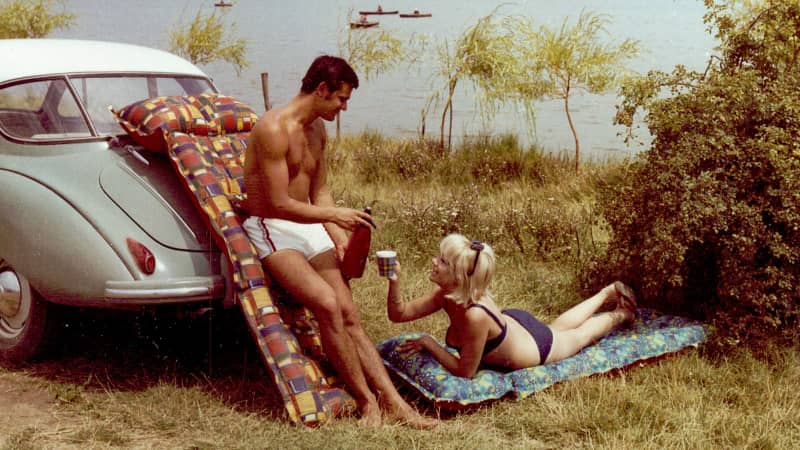
Many people have fond memories of their summers at the lake.
Fortepan / Ferencvárosi Helytörténeti Gyűjtemény
Dudás tells CNN Travel that the best-kept secret in Lake Balaton was the Communist party resort in Balatonaliga — Club Aliga. The resort compound was closed to the public until the regime change in 1989 as the Soviet-backed Eastern Bloc collapsed.
“It became the party resort in 1948 and had two areas, one for party members and workers and the other for the MSZMP Party,” she said, referring to the Hungarian Socialist Workers Party.
She reels off a list of high-ranking foreign guests, including former Soviet leaders Nikita Khrushchev and Leonid Brezhnev, cosmonaut Yuri Gagarin, East German leader Erich Honecker and Fidel Castro, who later gave his name to the resort’s Villa Castro.
Today, Club Aliga is going through extensive renovation works and up until recently was a popular retro nightclub. From the porch, there’s a wonderful panorama of Lake Balaton, from where you can see the body of water’s entire eastern basin from Balatonkenese to Tihany.
Party time
György Szilágyi, 64, a property investor from Budapest, was born during the onset of the communist era in 1956. It was all he knew up until the regime change in 1989. He has nothing but fond memories of his time at the lake.
“I knew that every few years it was ‘Balaton time’ and it was going to be fun,” he says. “It was almost like a privilege.
“If you didn’t have a friend or relative living there, you could count on your employer, which, in most cases, was practically the state.
“State-sponsored companies had built those typical concrete blockhouses and resort complexes that still stand witness to the communist era. The whole thing was so organized, you would be surprised.”
From the 1950s through to the 1980s, Lake Balaton was also extremely popular with German families and friends divided by the Berlin Wall. Due to this long and respected tradition, Germans still make up the main visitor numbers to the lake each year.
“It was full of Germans! It probably still is,” says Szilágyi. “They really seemed to love the place. It was a lot more affordable than it is now. Also, it was much more laid back, the atmosphere was somewhat more relaxed.”
Szilágyi recalls the cars of the communist era that would fill the roads leading up to Balaton.
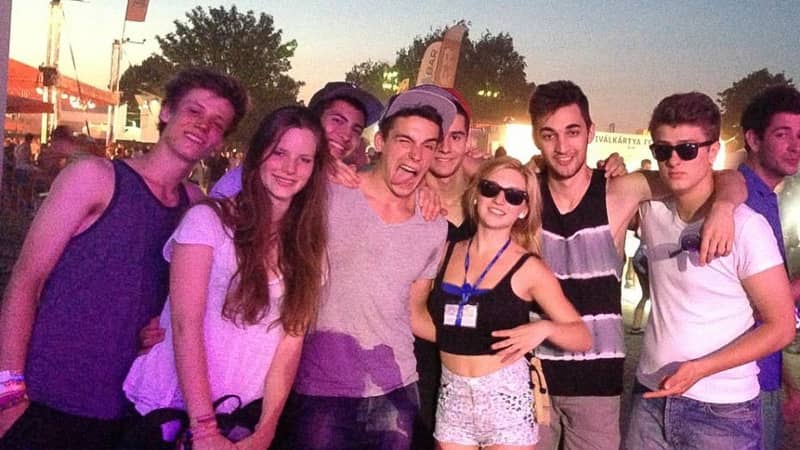
Szilágyi’s son Peter, with his tongue out, enjoys the Balaton Sound festival with friends.
Courtesy Peter and György Szilágyi
“Picture this: The coast would be studded with old Wartburgs, Ladas and Trabants,” he says. “Maybe you’d see some nice Mercedes even. Those, of course, belonged to the West Germans, who came to hang out with their East German friends and family on the coast, effectively turning the ‘Hungarian Sea’ into the only possible meet-up location between the two worlds,” he says.
“On the beach, most Hungarians would be eating what they brought from home, while those more fortunate would buy some lángos [Hungarian fried bread], corn on the cob or ice cream sticks.
“In the background, you might hear some Hungária [a Hungarian pop band] coming from an oddly colored VW Transporter. And you are there with your friends and family, doing the only thing you came here to do: sit back and enjoy the sun,” he reminisces.
“Generally, and don’t mistake me for a faithful communist for saying this, people seemed to have a lot more fun back in the old days.”
Szilágyi’s son Peter, 27, also from Budapest, disagrees. He says that there are plenty of good times to be had at the lake today and parties are plenty, a standout being the Balaton Sound music festival.
“I think we have more fun now,” he says. “Balaton Sound is great! Take the classic Sziget Festival vibe, stir in some of the biggest names in contemporary electronic music, then place this mix on the coast of Lake Balaton — that’s how I could best describe the Balaton Sound feeling to someone who hasn’t attended before.”
Peter also had fond childhood memories of summer vacations at the lake.
“We used to come together with the wider family circle near Balatonöszöd, in one of my aunties’ vacation home,” he says. “This was the time of year when I got to spend a whole week with my cousins who lived far away.
“Typically, we used to wake up early, around 7 a.m. or so, and head to the beach to secure one of the few shady spots under the trees. Us kids always had loads of fun, but this was also a great opportunity to reconnect with our family.”
The change
Magdi Dorogi, 66, a retired secretary from Budapest, was one of the lucky few who were able to visit Lake Balaton as a child, an annual tradition that continued right up until what locals call “the change,” when communism ended and the resorts started to cater for international visitors.
“As a young adult, I first visited the southern shore of Lake Balaton in 1971, in Balatonlelle,” she says. “We went there with our friends and later my husband, in his first Zsiguli [a Soviet car brand]. We loved it because of its relaxed mood and vibe.”
Dorogi and her unmarried colleagues from Hungary’s Quality Shoe Factory sidestepped rules that reserved Balaton breaks for families by bunking up with families who rented out spare rooms in their allotted accommodation to supplement incomes.
Days on the beach were followed by dinner and socializing in the evenings.
“At around 5 p.m. we went back to our accommodation, put ourselves in order, and then we went out to eat,” she says.
“There was no mention of any expensive places. There was a ‘thatched’ dining room in Balatonlelle where we ate fish soup and several kinds of fried fish, then rinsed it down with a Balaton light beer.”
Lake Balaton meant a lot to Hungarians, but in the ’60s and ’70s, it belonged mainly to the people of Budapest. During these times, few companies had resorts on Lake Balaton, but it slowly started to open to a wider Hungary and then to international visitors during the 1980s.
“It has changed a lot over the years. A lot of nice hotels have now been built and it’s become very popular,” Dorogi adds. “The northern shore is known as the so-called elite part while the south shore is cheaper and has a different vibe.”
The lake today
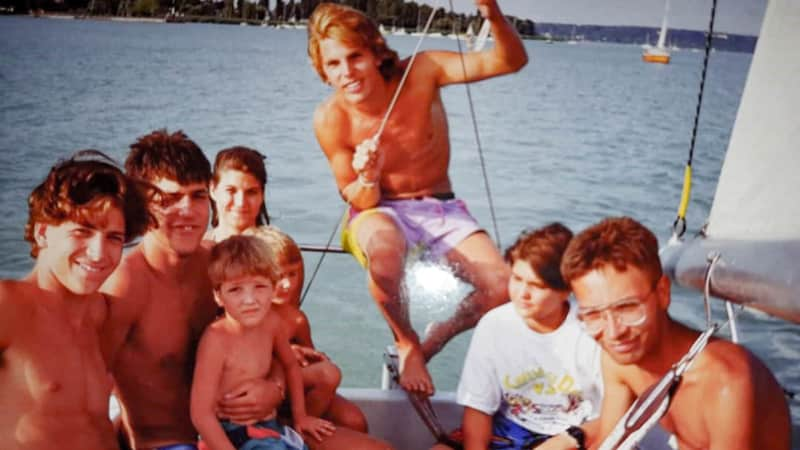
Zoltan Molnar, pictured here on the left during the 1980s.
Courtesy Zoltan Molnar
Zoltán Molnár, 48, a successful entrepreneur from Budapest, says Lake Balaton is a love affair that starts in childhood and continues right through to the present day.
“As you grow you realize that it offers much more than just the water. Endless possibilities. Wine, food, culture,” he says.
“My whole family has really fond memories of spending time at the lake in the ’70s and ’80s. It was such a great time for Hungarians during that era,” he adds. “We used to go to the lake for most of the summer each year and meet up with family and friends. These were taken at the tail end of the communist era, when everything started to change.”
“Lake Balaton is really starting to develop now. There are lots of opportunities for investment — in property and business. It’s also becoming a top European vacation destination once again and lots of people are visiting from all over the world. It’s an exciting time for the people of Hungary!”
The 80 kilometer-long lake offers something for everyone — it might sound like a cliché but happens to be true. The shallow waters on Balaton’s south side draw family vacationers to the beaches while the Blue Ribbon Grand Prix sailing regatta, ongoing since 1936, attracts more than 500 boats annually and thousands of spectators to the northern shores.
The Balaton Sound music festival is one of Europe’s largest open-air music events, which draws large crowds each summer — although not this year.
There are also party boats, bungee jumping, and other activities.
VeszprémFest, also postponed until 2021, typically draws big-name performers and crowds in the summer. The Valley of Arts festival in Kapolcs is held at the end of July while the Paloznak Jazz picnic is also a big draw each year.
The hills atop Lake Balaton’s north shore are home to many of Hungary’s prime vineyards. Somló and Badacsony stand out with unique volcanic soils that help create bold and full-bodied whites. Balatonfüred produces a delicious Szürkebarát (like a Pinot Noir), and other regions produce world-beating wines that are used in the finest restaurants across the country.
The future
With travel habits now changing for people all over the world, local hotspots like Balaton have once again become thriving regional holiday destinations.
Large numbers descend upon the lake to take advantage of the water sports activities and to sunbathe on the beautifully kept beaches.
Outside of the water, Balaton is fast becoming a major music and arts attraction and is now Hungary’s second-most important food and wine region after Budapest.
Lake Balaton is becoming so popular that the Hungarian government recently allocated $21 million for the modernization of the lake and its surrounding areas. The nearby Hévíz–Balaton Airport is currently in development to handle international flights, and new roads and railways are also being introduced.
Following the coronavirus crisis, even more money has been allocated to boost tourism and to encourage the people of the region to experience homegrown resorts. Various taxes have also been reduced to help the industry grow and prosper in these difficult times.
Large numbers of tourists are expected at Lake Balaton this year, probably the most it has seen since communism.

